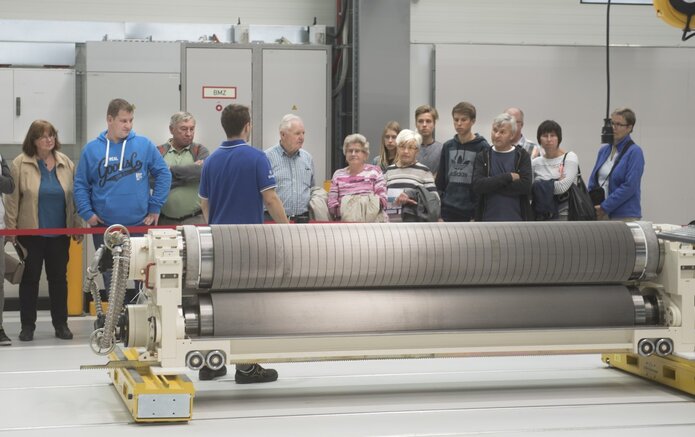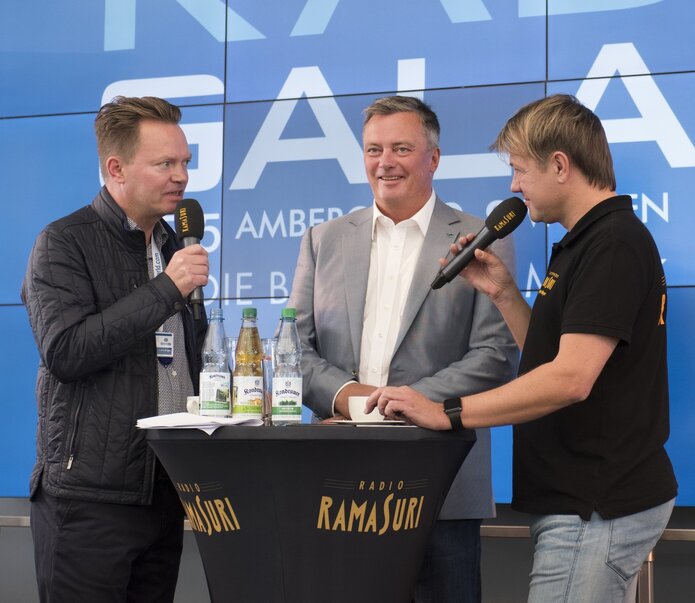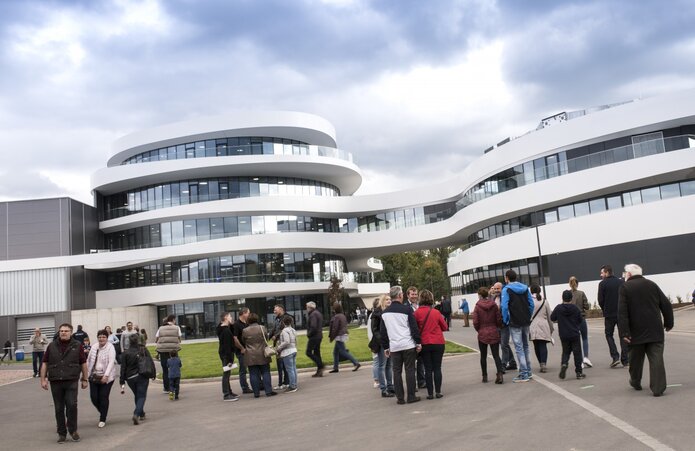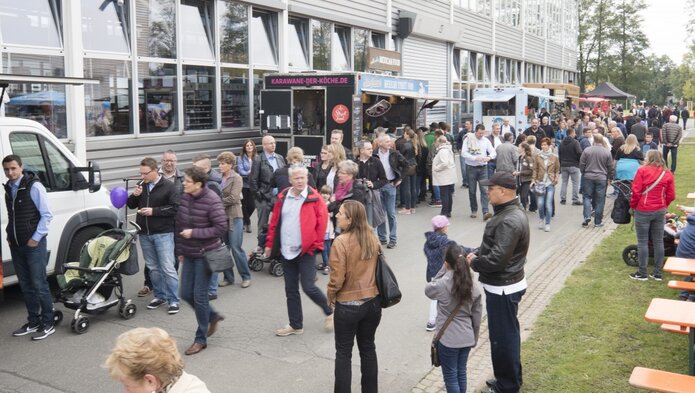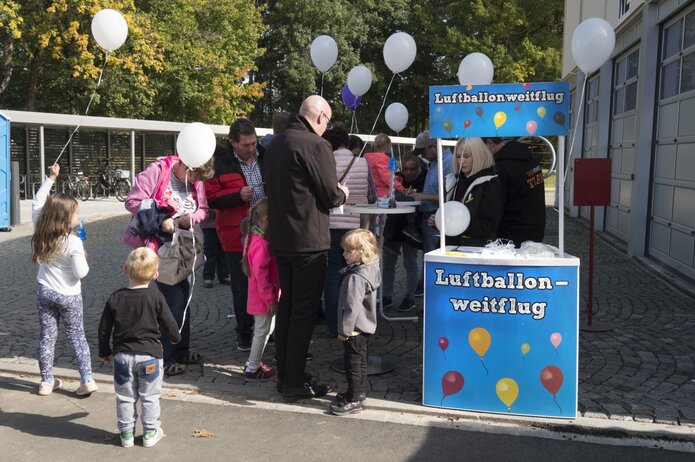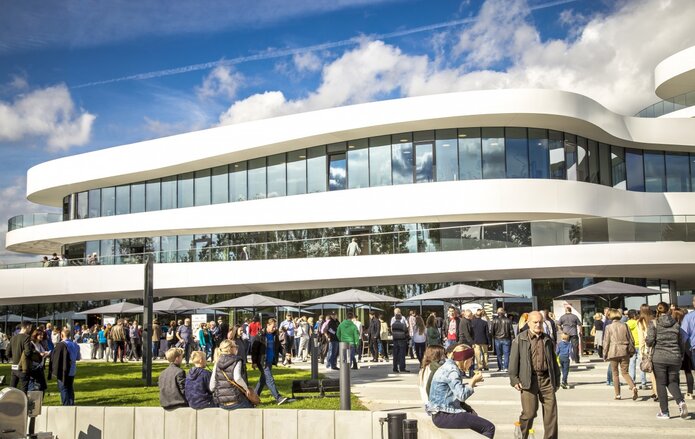How it all came to be. And how it is going to be.
1717
As the two hammer mills, Philippsburg and Altenhammer am Floß, were no longer able to produce enough bombs and howitzer grenades for the imperial armory in Vienna, Theodor Eustach, palatine of the duchy Sulzbach, founds the third ironworks in the county of Parkstein-Weiden. The blast furnace is completed on September 27, 1717. Once workers are hired, production begins.
1719
To directly process the raw iron to wrought iron, work begins on the construction of a hammer mill – the eponym of the village of Weiherhammer.
1730
The first workers, charcoal burners and wagoners settle across from the mill. The little settlement is named “Weihersdorf” and later renamed “Beckendorf.”
1832
In addition to the foundry products, wagon axles are produced in Weiherhammer for the first time. This is the year the machine factory was established.
1875
The “Bayerische Ostbahn” (Bavarian Eastern Line) opens the Weiden-Neukirchen/Sulzbach-Rosenberg railway line. Weiherhammer benefits greatly from the railway station, which offers a dedicated mail delivery service. This has the indirect consequence that refounding imported raw iron in the cupola furnace becomes cheaper than producing iron from ore in the charcoal oven.
1927
The company BHS (Bayerische Berg-, Hütten- und Salzwerke) is founded. As a result, the free state of Bavaria allows the new corporation to acquire what had been state-run enterprises, in return for shares. The seat of the corporation and its headquarters remain in Munich.
The 1920s
After the first world war, production is expanded to include glass polishers, traveling grates, motorized road rollers as well as milling equipment.
1952
On February 12, after the separating from the original main settlement in Etzenricht, the community of Weiherhammer becomes independent. This results in major growth for Weiherhammer – an abundance of shops and small businesses begins to crop up.
1960
The year BHS is established – as it is organized to this day. Paul Engel, Sales Manager of BHS suggests investing in the development and construction of corrugators. Just one year later, the first corrugator is delivered to Stahl company in Fleck/Lengries. Little does anyone know at the time that the addition of this new production sector would eventually make BHS one of the leading manufacturers of corrugators.
1969
The production of corrugators in the machine factory accounts for 80% of total production.
1972
With the restructuring of the local government, Kaltenbrunn, Dürnast and Trippach are integrated in the community of Weiherhammer; the communities officially merge in 1976. Shortly before, the independent area of “Etzenrichter Forst” is incorporated. This creates space for more industrial companies to move in.
1990
The turnover of the foundry, in relation to the total revenue of the company, shrinks more and more. By 1990, it amounts to just one-seventh of the total. To separate both production operations from each other economically, the foundry is integrated into the newly founded company Gusstec GmbH. Since that time, BHS has exclusively specialized in engineering.
1991
The free state of Bavaria sells all shares of BHS AG to the chemicals company SKW Trostberg AG (later renamed Degussa AG). In the years that follow, Degussa sells or shuts down all business sectors. As a holding company without any business operations, BHS AG later merges with SKW Trostberg.
1993
The new owners, Paul Engel and Edmund Bradatsch, assume responsibility for the outsourced corrugator company. At this time, the company has a workforce of 330 employees. Now known as “BHS Corrugated Maschinen- und Anlagenbau GmbH,“ the company grows rapidly and quickly becomes one of the leading developers and manufacturers of corrugators.
2002
BHS Corrugated builds its first corrugator with a working width of 3,300 meters. The corrugator is purchased by Prowell.
2015 until now
BHS Corrugated invests 65 million euros in the construction of new infrastructure at its headquarters. The biggest and most visible project is the “Lifecycle Building.” This complex houses nearly all our offices. Another big project is the new assembly hall, which includes flow production and an addition to the corrugating rolls production operation.
Today
Today, “BHS Corrugated Maschinen- und Anlagenbau GmbH” is a leading provider of solutions for the corrugated industry. The company is managed by the two sons of Mr. Paul Engel: Christian Engel as the company spokesman and Lars Engel as CEO with focus on strategic customer management.



